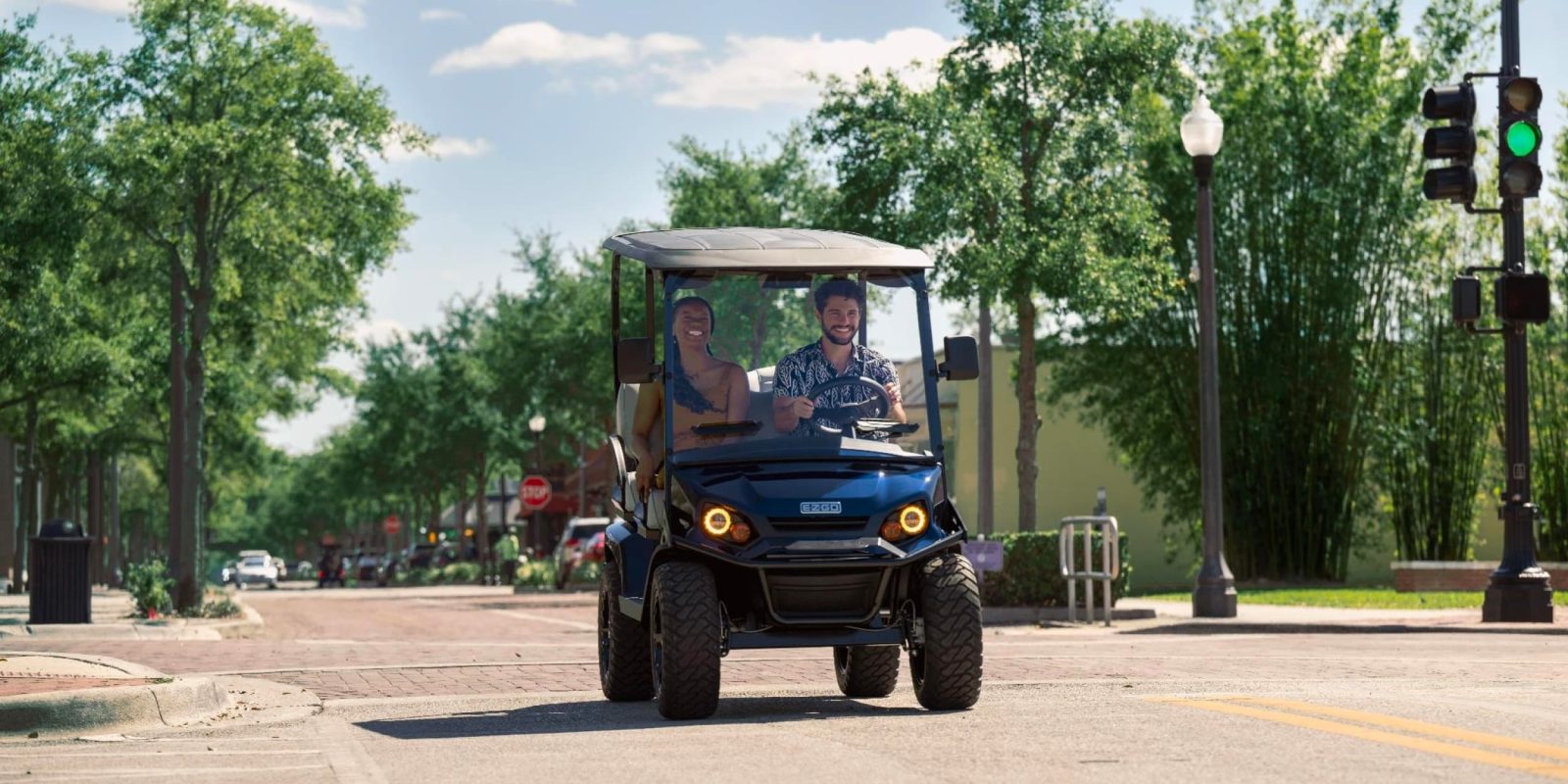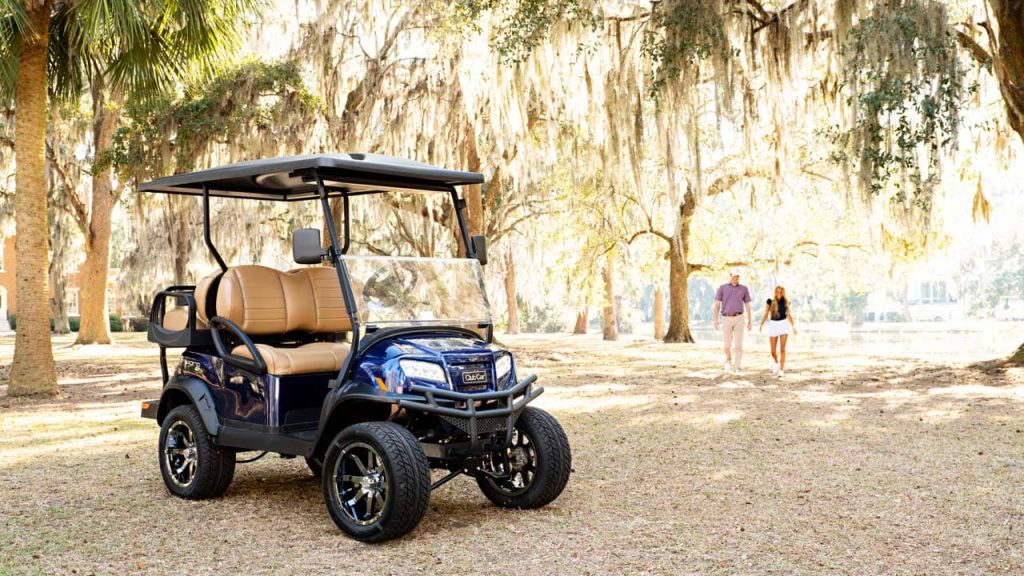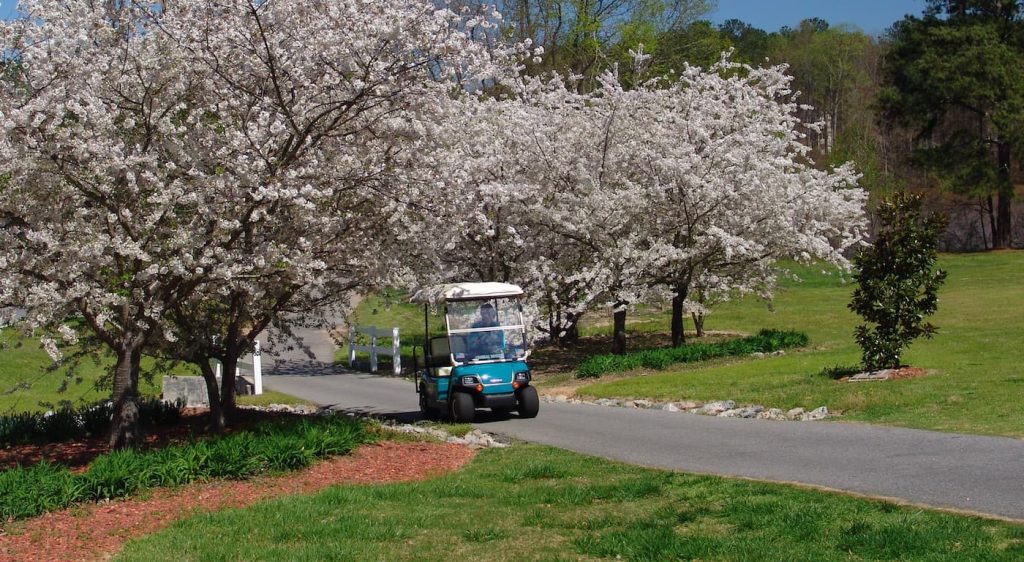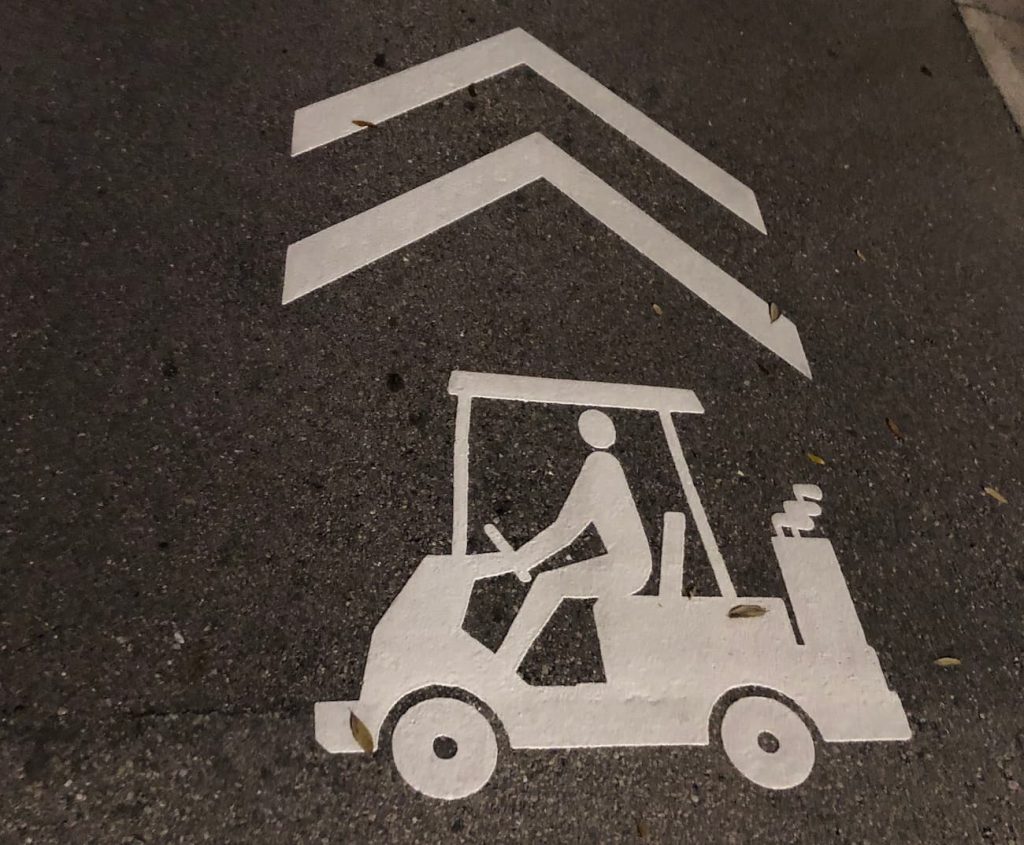
In recent years a surprising vehicle trend has quietly gained momentum across the US. Believe it or not, electric golf carts are becoming a popular choice as “second cars” for many American families.
These compact, efficient, and versatile vehicles are increasingly being seen far beyond the confines of the country clubs, zipping around neighborhoods and making regular appearances in local commutes. So what’s behind this surge in popularity?
Firstly, we need to recognize the huge strides made in electric vehicle (EV) technology over the past decade. Unlike economics, EV advancements in electric cars actually do trickle down.
Electric golf carts have reaped the benefits of this technological revolution, becoming far more than just golf course cruisers. Today’s models boast improved battery life from compact lithium-ion batteries, increased power with higher quality brushless electric motors, and a surprising array of creature comfort options. Want a lifted electric golf cart with a sound system? That’s no longer a custom job – you can buy fancy carts right out of the dealer catalog.

Modern electric golf carts now offer smooth and silent rides with ranges sufficient to cover daily short commutes comfortably. There’s no gasoline engine to require regular maintenance. There’s no little red gas can to keep around the garage. And there’s not even the old problem of the cart dying in the middle of the street because the old-school lead acid batteries went kaput. Today’s electric golf carts are a significant step up with quality lithium batteries and high-power motors.
That convenience, combined with the increasing popularity of ordinances that scores of towns have passed to make golf carts legal on smaller public roads, has helped many families replace the need for a second car.
I recently visited Babcock Ranch in Florida, a planned town where a large number of the homes are actually built with golf cart parking. Check out the home below, which features a second smaller garage designed for a golf cart. Planners already knew that residents would likely be getting around by cart and built the homes accordingly. The town square has nearly as many golf carts buzzing around as cars, and the local supermarkets and restaurants have parking lots full of carts.
It’s just one example showing that it may be difficult to entirely wrestle cars away from Americans, but what were once two-car families are often turning into one-car and one-golf-cart families and saving money along the way.

There are several shining examples of cities that have jumped in with both feet to legalize golf carts as everyday vehicles, making them more convenient as car replacers.
Peachtree City in Georgia is perhaps one of the most famous, with its tens of thousands of golf carts that roam the street. The city even removed the golf clubs from its city logo after deciding that it was “more of a golf cart city than a golf city.”
The city allows golf carts to be operated on many of its public roads but also has smaller multi-use paths designed for these small vehicles as well as for bikes and scooters, providing shorter routes and avoiding traffic from larger vehicles.
Many residents still own a typical car for longer trips but opt to use their golf carts as much as possible in town.

Ethan Luster, the owner of a golf cart dealer in Clearwater, Florida, explained that many of his customers are people moving down to Florida. In these communities, such small and convenient little vehicles are seen as a standard, normalized form of transportation around town.
For newcomers to the area, these convenient vehicles are often one of their first purchases, Luster explained:
Some of our out-of-state customers, they haven’t even been to their new house yet and they’ve purchased a golf cart on their way over.

The affordability of electric golf carts is another crucial factor driving their popularity as second cars. With prices significantly lower than the average car, and operating costs that are just a fraction of those for cars (whether gas-powered or electric), electric carts present an economically appealing alternative.
The reduced maintenance needs, coupled with incredibly low “fuel” costs, make them a sensible choice for budget-conscious consumers. A typical re-charge can cost as little as one dollar, and takes place in owners’ garages instead of needing to stop at a gas station for a fill-up.
While often not the main motivation for many people opting for an electric golf cart instead of a second car, the environmental factor plays a role in their rising popularity. As awareness about climate change and the environmental impact of fossil fuels grows, many Americans are consciously seeking out greener alternatives. Electric golf carts align perfectly with this mindset, producing zero tailpipe emissions and having a far smaller environmental footprint than conventional cars. Even issues like tire wear releasing cancer-causing particles into the environment are further reduced by using smaller and lighter vehicles like golf carts.

But it’s not just about saving money or the planet. The practicality of electric golf carts in certain contexts is unbeatable. For short trips within the community – such as to the local grocery store, the community center, or a friend’s house – they are incredibly convenient. They’re compact, making them easy to park, and their 20-25 mph speed is adequate for residential areas.
Many communities across the US, particularly in retirement areas like Florida and Arizona, are already golf cart-friendly, with dedicated lanes and parking spaces. But it’s not just the retirees who are enjoying these fun little vehicles. Many families are finding that golf carts are a fun and efficient way to handle school drop-offs, visit local parks, or simply enjoy a leisurely drive around the neighborhood.
Top comment by Brent
Golf carts are like bikes. If you give people a legitimate option (streets and communities that are designed well) to drive golf carts, many people will prefer that over getting in a big car.
Legal regulations have also evolved to accommodate this trend. Many states now have laws allowing golf carts to be driven on public roads with speed limits of up to 35 mph, provided they meet certain safety requirements. Manufacturers have also modified many of their models into LSVs, or Low Speed Vehicles. The LSV category is a federally approved category of motor vehicles that allows 25 mph vehicles that meet certain safety regulations to operate on roads with speeds limits of up to 35 mph. Golf carts that meet these regulations don’t require any special local ordinance to be legally operated on roads – they’re already covered by federal guidelines that are adopted by nearly all states. This regulatory support further boosts the viability of golf carts as second cars.

Safety might be a concern for some, given that golf carts do not offer the same protection as cars in the event of an accident. However, when used appropriately – that is, primarily for short, slow-speed trips within communities, and not on high-speed roads – the risk is substantially mitigated.
Many golf cart manufacturers are also adding safety features like seat belts, mirrors, and efficient braking systems to their models, all of which are requirements for LSVs. And as many communities create multi-use paths that are accessible to golf carts, these smaller vehicles can be further protected from dangerous full-size cars.
The rise of electric golf carts as “second cars” in the United States represents a fascinating convergence of technological advancement, environmental consciousness, economic sensibility, and practical convenience. As the trend continues to grow, it promises not just a transformation of our local commutes, but also a greener and more sustainable future for all. These humble carts, it seems, have driven far beyond the golf course and straight into the hearts of American families.
FTC: We use income earning auto affiliate links. More.




Comments